Overclocking Computers with Intel Pentium III (Coppermine)
|
| < Day Day Up > |
|
Intel Pentium III with the Coppermine core, manufactured according to 0.18-micrometer technology, is characterized by relatively strong performance and overclocking capabilities.
The existing technological reserve allows a comparatively large increase of the Front Side Bus (FSB) frequency, which determines the internal and external processor frequencies. Such frequency growth is accompanied by an equivalent increase in CPU performance and, consequently, by improvement in overall system performance.
The best overclocking potential is found in the earliest representatives of the Coppermine line. Technological reserve allowed Intel to release processors based on this core with a clock frequency of 1 GHz or higher.
The following sections provide the results of overclocking this high-performance Pentium III processor and an analysis of its operation in the overclocked mode.
Computer with Pentium III 500E
System Configuration
-
Processor — Intel Pentium III 500E (Coppermine core, 256 KB L2 cache, processor frequency operation, recommended processor-bus frequency of 100 MHz, 1.6 V core supply, FC-PGA installed on the motherboard via Slot 1, Socket 370 adapter)
-
Motherboard — Abit BE6-II (Intel 440BX AGPset chipset)
-
Hard disk — IBM DPTA-372050 (20 GB, 2 MB cache memory, Ultra DMA/66)
-
RAM — 128 MB, PC100
-
Video adapter: Asus AGP-V3800 TV (TNT2 video chip and 32 MB video memory)
-
CD-ROM drive — Asus CD-S400/A (40x)
-
Operating system — Windows 98 with installed drivers for an Ultra DMA/66 controller
Establishing Overclocking Modes
The overclocking modes were established in BIOS Setup by increasing the processor-bus frequency. The core supply voltage for all frequencies was standard (1.6 V). The sequence of selecting and setting parameters is illustrated in Figs. 18.6–18.8.

Figure 18.6: Opening the SoftMenu III Setup menu in BIOS Setup (Pentium III 500E)
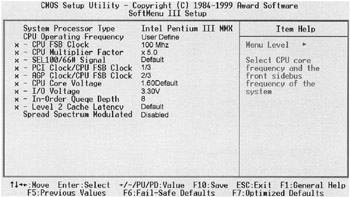
Figure 18.7: Setting the recommended parameters in SoftMenu III Setup (Pentium III 500E)

Figure 18.8: Establishing the overclocking mode in SoftMenu III Setup (Pentium III 500E)
Testing the System
WinBench 99 v1.1 tests (CPUmark 99 and FPU WinMark) were used. Test results are provided in Table 18.4 and in Figs. 18.9 and 18.10.
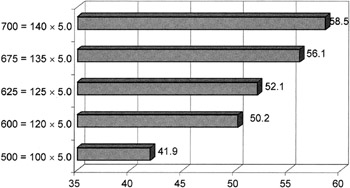
Figure 18.9: Pentium III 500E test results (CPUmark 99)
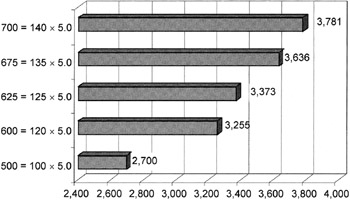
Figure 18.10: Pentium III 500E test results (FPU WinMark)
| FSB frequency (MHz) | CPU frequency (MHz) | CPUmark 99 rating | FPU WinMark rating |
|---|---|---|---|
| 100 | 500 = 100 × 5.0 | 41.9 | 2,700 |
| 120 | 600 = 120 × 5.0 | 50.2 | 3,255 |
| 125 | 625 = 125 × 5.0 | 52.1 | 3,373 |
| 135 | 675 = 135 × 5.0 | 56.1 | 3,636 |
| 140 | 700 = 140 × 5.0 | 58.5 | 3,781 |
Computer with Pentium III 550E
System Configuration
-
Processor — Intel Pentium III 550E (Coppermine core, 256 KB L2 cache, processor frequency operation, recommended processor-bus frequency of 100 MHz, 1.65 V core supply, in box, 1/28/00 pack date, version A13433-001, made in Malaysia, SL3V5 S-Spec)
-
Motherboard — Abit BE6-II (Intel 440BX AGPset chipset)
-
Hard disk — IBM DPTA-372050 (20 GB, 2 MB cache memory, Ultra DMA/66)
-
RAM — 128 MB, PC100
-
Video adapter — Asus AGP-V3800 TV (TNT2 video chipset, 32 MB SGRAM video memory)
-
CD-ROM drive — Asus CD-S400/A (40x)
-
Operating system — Windows 98 with installed drivers for an Ultra DMA/66 hard disk controller
Establishing Overclocking Modes
The overclocking modes were established in BIOS Setup by increasing the processor-bus frequency. The core voltage was standard for all frequencies (1.65 V). The order of choosing and setting parameters is illustrated in Figs. 18.11–18.13.
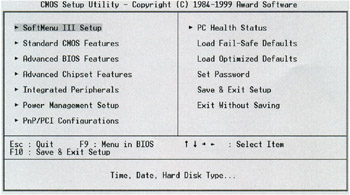
Figure 18.11: Opening the SoftMenu III Setup menu in BIOS Setup (Pentium III 550E)
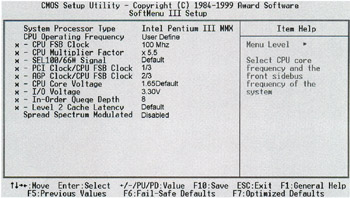
Figure 18.12: Setting the recommended parameters in SoftMenu III Setup (Pentium III 550E)
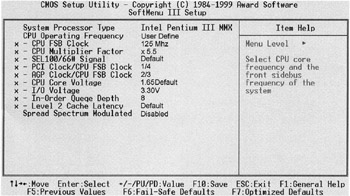
Figure 18.13: Establishing the overclocking mode in SoftMenu III Setup (Pentium III 550E)
Testing the System
WinBench 99 v1.1 (CPUmark 99 and FPU WinMark), 3DMark2000, and Video 2000 were used for testing. The results are provided in Tables 18.5–18.7 and in Figs. 18.14 and 18.15.

Figure 18.14: Pentium III 550E test results (CPUmark 99)

Figure 18.15: Pentium III 550E test results (FPU WinMark)
| FSB frequency (MHz) | CPU frequency (MHz) | CPUmark 99 rating | FPU WinMark rating |
|---|---|---|---|
| 100 | 550 = 100 × 5.5 | 46.1 | 2,970 |
| 120 | 660 = 120 × 5.5 | 55.2 | 3,580 |
| 125 | 688 = 125 × 5.5 | 57.3 | 3,710 |
| 135 | 743 = 135 × 5.5 | 61.7 | 4,000 |
| 140 | 770 = 140 × 5.5 | 64.3 | 4,160 |
| FSB frequency (MHz) | CPU frequency (MHz) | 3DMark2000 rating | Video 2000 rating |
|---|---|---|---|
| 100 | 550 = 100 × 5.5 | 5,013 | 335 |
| 133 | 733 = 133 × 5.5 | 6,299 | 393 |
| CPU frequency (MHz) | 550 = 100 × 5.5 | 733 = 133 × 5.5 | |
| Video 2000 rating (800 × 600 × 32) | 335 | 393 | |
| Data transfer rate (MB/sec) | Non-local → local video memory | 332.8 | 447.2 |
| Local → non-local video memory | 15.6 | 17.0 | |
| Video memory → system memory | 75.0 | 89.4 | |
| System memory → video memory | 169.6 | 213.6 | |
| MPEG2 encoding (frames per second) | 18.32 | 24.67 | |
| MPEG2 decoding (% of processor workload) | 3 Mbits/sec | 98 | 98 |
| 6 Mbits/sec | 98 | 98 | |
| 9 Mbits/sec | 98 | 100 | |
The results in Tables 18.5–18.7 and in Figs. 18.14 and 18.15 show that Pentium III 500E and 550E have significant technological reserve. Their architecture, based on the Coppermine core, uses cache memory that operates at the full core frequency and has an improved operating algorithm (256-bit Advanced Transfer Cache).
Computer with Pentium III 700E
System Configuration
-
Processor — Intel Pentium III 700E (Coppermine core, 256 KB L2 cache, full core frequency operation, recommended processor-bus frequency of 100 MHz, 1.65 V core supply, in box, FC-PGA (connected via adapter), 4/27/00 pack date, version A15753-001, SL45Y S-Spec)
-
Motherboard — Abit BE6-II (Intel 440BX AGPset chipset)
-
Hard disk — IBM DPTA-372050 (20 GB, 2 MB cache memory, Ultra DMA/66)
-
RAM — 128 MB, PC100
-
Video adapter — Asus AGP-V3800 TV (TNT2 video chipset, 32 MB video memory)
-
CD-ROM drive — Asus CD-S400/A (40x)
-
Operating system — Windows 98 with installed drivers for an Ultra DMA/66 hard disk controller
Establishing Overclocking Modes
The overclocking parameters were set in BIOS Setup by increasing the processor-bus frequency in SoftMenu III Setup. At frequencies of 700 MHz, 770 MHz, and 840 MHz, the core supply voltage was standard (1.65 V). At 910 MHz, it was increased to 1.7 V. Parameter selection is illustrated in Fig. 18.16.
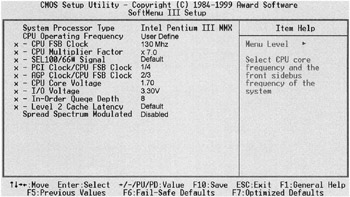
Figure 18.16: Establishing the overclocking mode in SoftMenu III Setup (Pentium III 700E)
Testing the System
WinBench 99 v1.1 was used as the main testing package (CPUmark 99 and FPU WinMark). Test results are in Table 18.8 and in Figs. 18.17 and 18.18.
| FSB frequency (MHz) | CPU frequency (MHz) | CPUmark 99 rating | FPU WinMark rating |
|---|---|---|---|
| 100 | 700 = 100 × 7 | 62.1 | 3,700 |
| 110 | 770 = 110 × 7 | 68.7 | 4,110 |
| 120 | 840 = 120 × 7 | 75.1 | 4,470 |
| 130 | 910 = 130 × 7 | 81.6 | 4,830 |
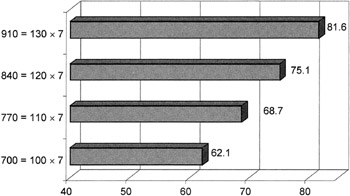
Figure 18.17: Pentium III 700E test results (CPUmark 99)

Figure 18.18: Pentium III 700E test results (FPU WinMark)
Computer with Pentium III 800EB
System Configuration
-
Processor — Intel Pentium III 800EB (Coppermine core, 256 KB L2 cache, full core frequency operation, recommended processor-bus frequency of 133 MHz, 1.65 V core supply, in box, FC-PGA2)
-
Motherboard — Asus TUSL2-C (Intel 815E B-Step chipset)
-
Hard disk — IBM DPTA-372050 (20 GB, 2 MB cache memory, Ultra DMA/66).
-
RAM — 256 MB, PC133
-
Video adapter — Asus GeForce2, 64 MB
-
CD-ROM drive — Asus CD-S500/A (50x)
-
Operating system — Windows 2000, Service Pack 2
Establishing Overclocking Modes
The overclocking mode parameters were set in BIOS Setup by increasing the processor-bus frequency in SoftMenu III Setup. The following frequencies were set: 133 MHz (nominal), 160 MHz, and 177 MHz. At these frequencies, memory operated in asynchronous mode at frequencies of 133 MHz, 120 MHz, and 133 MHz. Such modes were chosen because the memory used in this system didn't support operation at increased frequencies. Its operation was accompanied by failures at 140 MHz.
Because the processor multiplier is small (6x), increasing the processor frequency 44 MHz allowed the CPU frequency to be raised only 200 MHz. The resulting frequency was 177 MHz; therefore, overall system performance increased significantly.
Testing the System
The WinBench 99 v1.1 test package (CPUmark 99 and FPU WinMark) was used. Test results are provided in Table 18.9 and in Figs. 18.19 and 18.20.
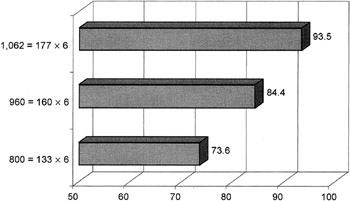
Figure 18.19: Pentium III 800EB test results (CPUmark 99)
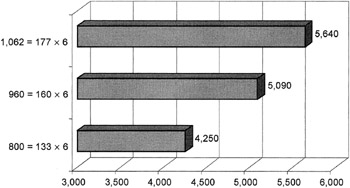
Figure 18.20: Pentium III 800EB test results (FPU WinMark)
| FSB frequency/RAM (MHz) | CPU frequency (MHz) | CPUmark 99 rating | FPU WinMark rating |
|---|---|---|---|
| 133/133 | 800 = 133 × 6 | 73.6 | 4,250 |
| 160/120 | 960 = 160 × 6 | 84.4 | 5,090 |
| 177/133 | 1,062 = 177 × 6 | 93.5 | 5,640 |
|
| < Day Day Up > |
|
EAN: 2147483647
Pages: 111